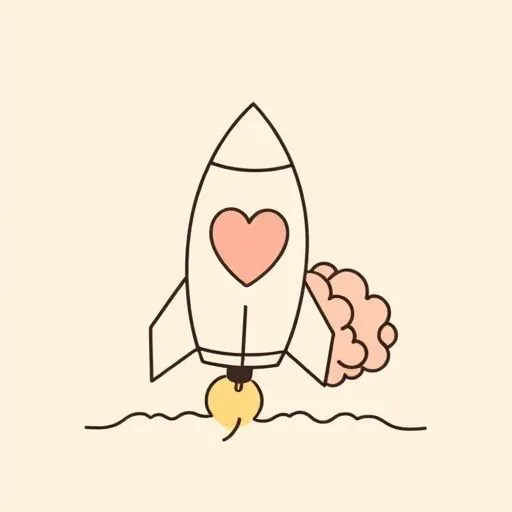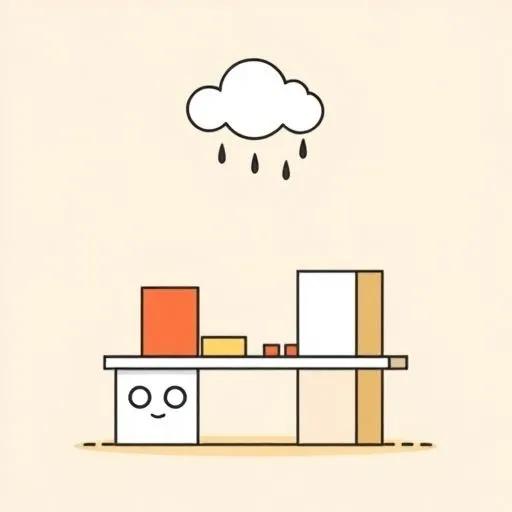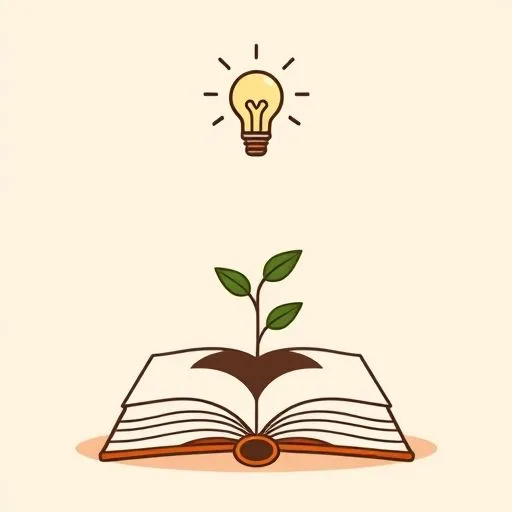
You know that moment when the after-school chatter starts flowing like maple syrup on a Saturday morning pancake? When my seven-year-old first grader drops her backpack hits the floor and the questions begin—‘Baba, why do clouds cry sometimes but not others?’, ‘How does the moon follow us home?’—and suddenly, I’m the least qualified scientist in our living room laboratory. This week’s headlines about businesses realizing AI can’t replace human magic made me smile wider than when my little inventor turned cereal boxes into a rocket ship. Because parents? We’ve known this truth since the first toddler outsmarted a childproof lock. The real competitive advantage isn’t in the circuits—it’s in the heartbeat of curiosity we nurture every day.
The Cereal Box Lesson No Corporate AI Team Could Predict

Remember when business gurus claimed the future belonged to whoever had the smartest algorithms? Meanwhile, in homes worldwide, we watched tiny humans perform daily miracles no machine could copy. Take last Tuesday’s masterpiece: my budding engineer fashioned a working parking garage from oatmeal containers and misplaced Lego bricks—all before breakfast. Forbes might call this ‘clever use of materials’ or ‘breakthrough creativity.’ I call it proof that childhood’s boundless imagination will always be the rarest commodity.
Just like how a gentle afternoon drizzle inspires spontaneous living room dance parties instead of cancelled playdates, humanity shines brightest when adapting creatively. While companies scramble to make AI their ‘secret sauce,’ parents witness the irreplaceable magic of:
- That lightbulb moment when sticky fingers figure out gravity by dropping toast (repeatedly)
- The negotiation skills honed during ‘five more minutes’ at the playground
- The emotional intelligence blooming when dolls have elaborate apologies after disagreements
None of this gets logged in datasets—but these messy, beautiful interactions are forging tomorrow’s innovators.
Building Our Family’s Unhackable Firewall (Hint: It’s Laughter)

Tech pundits warn about AI rapidly eliminating temporary advantages. Meanwhile, walking home past the neighborhood playground—where caregivers exchange knowing smiles while kids conquer jungle gyms—I realize we’re fortifying something no upgrade can touch: connection. Like when hurried bedtime routines transform into giggly story marathons because her ‘just one more chapter’ pleas melt my resolve.
A study from MIT Sloan nailed it—the edge comes from investing in human qualities. In our home, that looks like:
- Turning grocery shopping into alphabet treasure hunts instead of handing her a tablet
- Responding to ‘Watch this, Baba!’ with enthusiastic eyes rather than distracted grunts
- Cooking disasters becoming comedy specials—we top kimchi pancakes with a drizzle of maple syrup—East meets West right at the breakfast table! Burnt kimbap tastes better seasoned with laughter
These choices create our family’s unbreakable code: the trust and creativity that flourish when screens fade into the background.
Raising Future-Proof Humans in Backyards and Living Rooms

As global companies realize AI works best + humans collaborate, parents worldwide nod knowingly—we’ve been coaching this partnership since Duplo blocks met smart toys. The key isn’t rejecting technology but making it serve our humanity. Like how we:
- Use translation apps for multicultural playdates—but keep hearts connected through shared games
- Consult weather apps for park days—but still splash in unexpected puddles joyfully
- Watch animal documentaries together—then craft elaborate habitats from sofa cushions
A recent Wharton finding crystallizes it: sustainable advantage comes from blending AI’s efficiency with irreplaceable human judgment. Our parental version? Letting smart devices handle mundane tasks (thank you, automated lunchbox reminders!) while we pour energy into raising:
- Critical thinkers (yes, even when they critique your pancake shapes)
- Emotionally resilient explorers (muddy knees = badges of honor)
- Adaptable problem-solvers (who consider using bubble wrap as winter insulation)
This human-led approach creates kids who’ll thrive no matter how technology evolves.
The Lasting Algorithm No Tech Can Replicate

As twilight paints our neighborhood gold and scooters whirl past like happy satellites, I’m struck by a truth no corporate boardroom could capture: our greatest advantage lives in bedtime whispers after phones are silenced. It’s the invisible curriculum taught through scraped knees bandaged with care and failed science experiments celebrated for effort.
The future belongs to those nurturing:
- Compassionate Curiosity: Tech answers ‘what,’ but humans ask ‘why does it matter?’
- Imperfect Creativity: AI generates content; people create meaning
- Relational Wisdom: Algorithms optimize; hearts harmonize
Long after current AI becomes obsolete, the humans who parent with presence—who trade perfection for connection—will have built something enduring. Because no matter how smart machines get, they’ll never understand the superpower in sticky-fingered hugs after a hard day, or why we save refrigerator art like priceless treasures.
So when the world feels overwhelmingly digital, remember: your best competitive advantage is already climbing trees in the park, belting off-key songs in the shower, and asking questions that leave you Googling furiously. Keep nourishing that irreplaceable human spark—and watch them light up tomorrow.
Source: AI Will Reshape Business. But The Competitive Advantage Is Still Human (Forbes, 2025-09-22)
